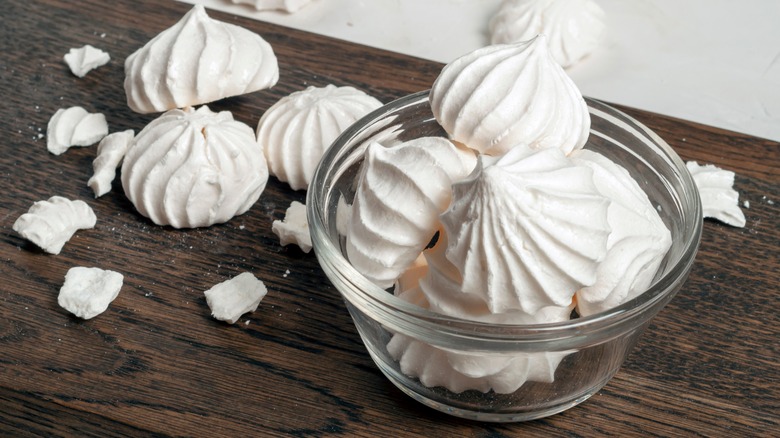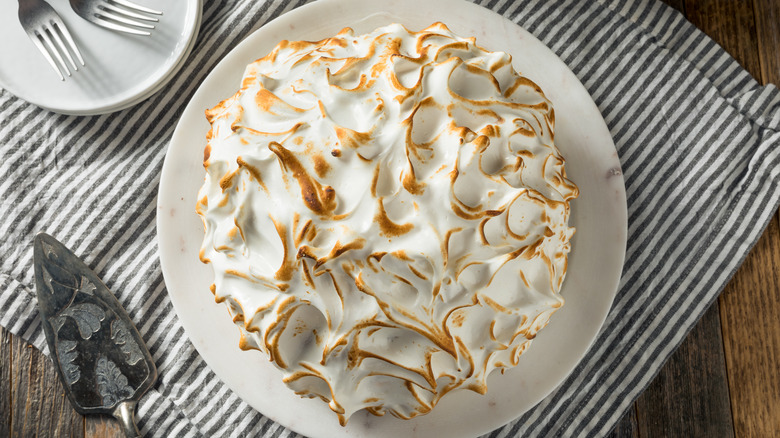The Differences Between French, Swiss, And Italian Meringues
We may receive a commission on purchases made from links.
Facts are facts — there aren't many of us without a sweet tooth. Statista reports that in the United States, in the period between 2020 and 2022, "Americans consumed 11 million metric tons of sugar," an increase rise from 10 million metric tons from the period of 2009 and 2010. But who can resist those sweet, sweet desserts? There are so many classic American desserts to choose from, including the flambéed Baked Alaska cake, which, surprisingly, is not from Alaska but from New York, notes Insider.
For some, the best part of Baked Alaska is its fluffy meringue. But how many of us actually know what a meringue is? Masterclass reveals that meringue is a "foam of air bubbles enclosed in egg white and stabilized by sugar." The first meringues were made in the 17th century, and because cooks didn't have whisks, they used bundled straws instead.
And there's not just one type of meringue, but three: French, Swiss, and Italian. And there are significant differences between them.
French meringue is the least stable when baked, while the Italian one is the most stable
Cook's Illustrated reports that the most common and straightforward type of meringue is the French one, made by gradually beating egg whites and sugar into stiff peaks. It's used for layering cakes such as dacquoise, and it's also often folded into the cake batter and baked. However, this meringue type is the least stable of the three, at least when baked in the oven.
On the other hand, its Swiss cousin is made by beating egg whites and sugar over a pot of boiling water. Once the temperature reaches 130 F, it's taken off the heat and beaten until it cools and develops a stiff texture. Compared with the French meringue, the Swiss one is silkier, denser, and smoother. It's most commonly used "as a base for buttercream frostings," and it's also suitable for the Baked Alaska cake, explains Martha Stewart.
Italian meringue, meanwhile, is made by adding sugar syrup to whipped egg white peaks. Then, the meringue is whipped again until it becomes firm and glossy. Italian meringue can be added to sorbets and ice cream to lighten them or used as a pie topping. It's also the most stable type of meringue when baked (per Great Italian Chefs). So the next time you're making a cake or a pie, choose wisely between the three options.

